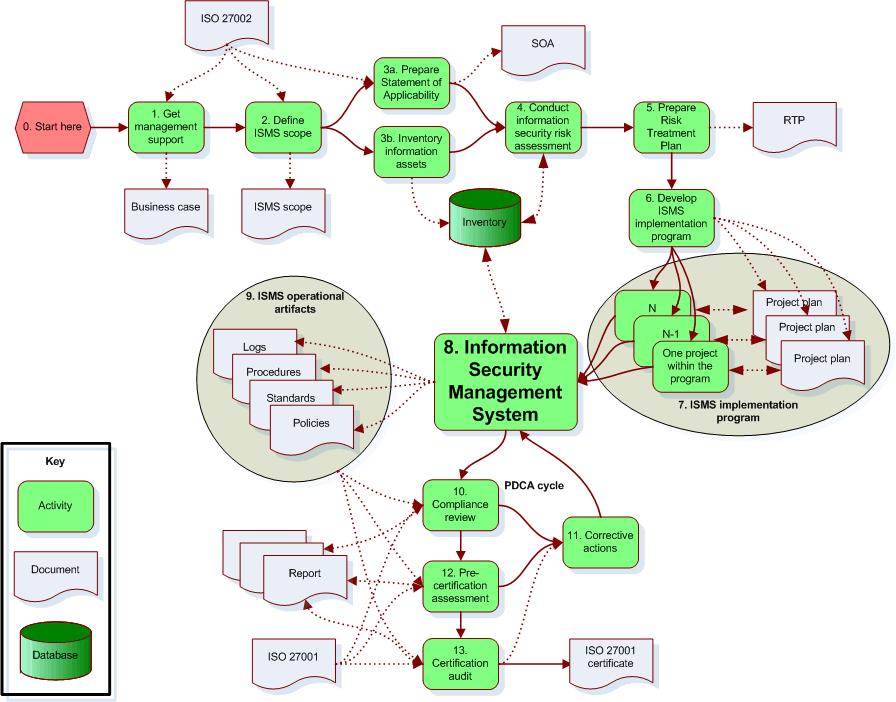Achieving ISO/IEC 27001 Security Foundation Certification

- Got to the EXIN Information Security Foundation (ISF) on standard ISO / IEC 27001.
- Learn the intricacies of the threat. And the risk in your organization.
- Maintenance of security systems. And respond to incidences of security breaches.
- Measures to counter and cope with the threat of attack from various Malware.
- To ensure care information. And Enterprise Security According to the rules of international standards.
Benefits to be gained from this course.
ISO / IEC 27000 is an international standard that is recognized worldwide. This course will help the participants. Knowledgeable about the standards of care security. Including technology Safety Under standard ISO / IEC 27001.
The ideal would be to attend this course.
- If you care about the network and Data Center Enterprise.
- It is associated with the administration, security, networking and Server.
- The network management system
- You need to prepare the standard ISO / IEC 27001 by EXIN Information Security Foundation (ISF).
Workshop curriculum guidelines
This program is in conjunction with the theory that the rules of ISO / IEC 27001 and practical. You can put it to work, whether it is a Server running under different operating systems. The Networking and Data Center Workshop details are as follows.
- Exam Simulation by EXIN
- How to Use Data Security Standard Recommended by ISO / IEC 27001.
- How to check for vulnerabilities. And threats on the network and Server.
- Analyzing case examples on network threats. And Documentation

View profile
Introduction to ISO/IEC 27001 Security Foundation
- Examination and certification goals
- Blueprint of the Information Security Foundation exam
- Assessing your initial readiness
Defining Information and Data Security
EXAMINING THE IMPORTANCE OF DATA
- Data and information systems
- Storing, communicating and processing information
WHAT IS INFORMATION SECURITY?
- Protecting the security objectives: confidentiality, integrity and availability
- Determining the value of information
ASSESSING THE CIA MODEL
- Implementing confidentiality measures
- Ensuring integrity with accurate information
- Guaranteeing availability for continuity and timely operations
- Creating an information architecture
Analyzing Threats and Risks to the Organization
EVALUATING THREATS TO YOUR ORGANIZATION
- Measuring how assets are at risk
- Detecting vulnerabilities that threaten operations
PERFORMING RISK ANALYSIS
- Evaluating the benefits of quantitative vs. qualitative risk analysis
- Deploying countermeasures to defeat threats and reduce risk
Managing a Balanced Approach to Information Security
DIRECTING SUPPORT FOR INFORMATION SECURITY
- Defining a security policy and its purpose in your organization
- Examining the components of a security policy
- Achieving in-depth security with a multilevel defense
DOCUMENTING SECURITY OBJECTIVES
- Managing the goals of internal security
- Maintaining sound external policy practices
- Assigning roles and responsibilities
RESPONDING TO SECURITY INCIDENTS
- Effectively communicating security events
- Documenting different events and weaknesses
- Establishingand following escalating procedures
Implementing Security Countermeasures
ENUMERATING TYPES OF SECURITY COUNTERMEASURES
- Preventing intrusions and attacks
- Detecting security breaches
- Suppressing the damage of a security incident
- Applying corrective measures to restore integrity
- Transferring risk by insuring against loss
CONTROLLING ACCESS TO INFORMATION
- Creating a classification scheme
- Labeling and handling information as an asset
ENHANCING SECURITY WITH CRYPTOGRAPHY
- Managing access with encryption
- Guaranteeing authenticity with digital signatures
- Ensuring integrity with hashing
ASSESSING THREATS TO YOUR ORGANIZATION
- Detecting viruses and hoaxes
- Preventing SPAM and phishing fraud
- Countering logic bombs and Trojan horses
- Defending against the threat of spyware, worms and rootkits
Assessing Legal Requirements
COMPLYING WITH LEGISLATION AND REGULATIONS
- Upholding security standards and policies
- Verifying compliance
ADHERING TO LEGISLATIVE AND REGULATORY MEASURES
- Defending intellectual property rights
- Managing organizational records
- Safeguarding personal information
- Preventing misuse of information
Final Review and Preparation
- Priming for the exam
- Identifying the exam requirements
- Handling difficult questions
- Managing time and progress during the exam
- Assessing readiness
